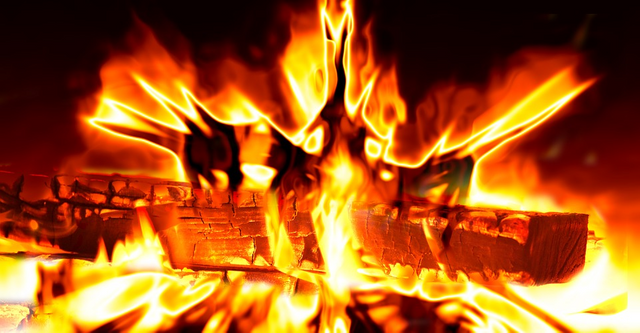Hello everyone! And welcome to the next analysis in my Christmas series! Today, we hit my favorite recitative and aria from Handel's Messiah: Thus Saith the Lord. . . and But Who May Abide?. If you have missed any of the previous analyses (there are 7 others thus far), they are linked at the bottom of this article. Before we get into the analysis, I feel I should address that this aria is sometimes sung by a mezzo soprano, or an alto rather than bass. The Schirmer edition has it sung by a bass, and I am personally fond of the sound of a bass' voice for this, so I have done analyzed the score for bass (with a recording by Bryn Terfel who is a bass). Now that that has been settled, let's get into this analysis.
Text
Got'cha. First, we will discuss the text. Here is the text:
Recitative:
Thus saith the Lord, the Lord of Hosts: Yet once a little while and I will
Shake the heavens and the earth, the sea and the dry land. And I will
Shake all nations, and the desire of all nations shall come. (Haggai
2:6-7)
The Lord, whom ye seek, shall suddenly come to His temple, even the
Messenger of the Covenant, whom ye delight in; behold, He shall come,
Saith the Lord of Hosts. (Malachi 3:2)
and
Aria:
But who may abide the day of His coming, and who shall stand when He appeareth? For He is like a refiner's fire. (Malachi 3:2)
This text comes from scene two of the Messiah which is meant to describe the coming judgement. I think these two works are very good at setting a serious tone. Plus, you have to admit, they sound quite cool.
Analysis
Form
Once again, I would say both of these pieces are more or less through composed. I think the Recitative simply serves the purpose of advancing the plot. The music is less important, and does not really have a form.
I would say that the aria has a broad form of a slow section consisting of "A material" (the "But Who May Abide?" text and theme), and a contrasting fast section consisting of "B material" (the "For He is like a refiners fire" text and theme). There is then another slow section with similar "A material", and another contrasting fast section with similar "B material". Each of these "sections" are through composed, and, as a result, I don't think this form strictly has a name, but you could loosely classify it as a binary which repeats in terms of the characteristics of each of these sections.
"A material"
Contrasting "B material"
Reuse of "A material"
Reuse of "B material"
Effect
I think these pieces are quite cool because of their overall effect. First of all, they are telling a story. The story has a moving point of the coming of the Lord, and the fact that we are all not worthy of his grace. On top of this, Handel uses a broad variety of ideas to convey this effect. For example, the tremolos in the fast "B material" section. Handel is very good at finding an idea, and developing it as far as it needs to go to get his point across to the audience. Overall, I think this whole section has a very significant effect. He does a great job at capturing the mood needed.
I am also very fond at how much musicianship these pieces require to sing. The malismas in the Recitative have an incredible effect, as do the scales and trills in the aria.
Harmonics
Let me just say, the harmonics in this piece were not exactly straight forward. I was stunned by how forward thinking they are. At first, they seem clunky, but you can just see how they push the music forward. For example, the beginning section of the Aria:
Already, he seems to be shifting the key to F major, but it still sounds as if it is inbetween major and minor. This uncertainty in harmony helps reinforce the uncertainty that the speaker must be feeling about who shall stand when the Lord appeareth. This is partially effect, partially harmony. I decided to include it under harmony.
On top of this, you can see the harmonies he utilizes. They are in no way what I would expect from a baroque composition. There are a lot of 7ths (such as in this example:)
The vi7 of F and ii7 of g really jump out at me (in a good way).
There are also a lot of odd choices (such as in this example:)
The harmony above the pedal point was very surprising, almost out of nowhere. On top of that, the dissonance created in this one instance is just extraordinary. Also, it could be argued that the D in the bass is a functioning 7th. I wouldn't disagree with that choice. I labeled it a pedal point because I thought that since the D was a continuation of the last bar, it was more of a pedal point. But, on second thought, I think it might be functioning as a 7th. Either way, the harmony is interesting. The fact that I even have to debate that shows that Handel was making interesting decisions in this piece. Because of this particular decision, this is one of my favorite moments in the whole piece.
Now, here is my harmonic analysis. Please keep in mind that:
Green highlights the figure in the "A material" which occurs in multiple voices at different times.
Maroon highlights a pedal point
And Pink highlights a voice exchange
Here is a link to the video on youtube in case the embed fails.
Previous Analyses
The Nutcracker Suite
Miniature Overture (12/4)
March (12/6)
Dance of the Sugar Plum Fairy (12/8)
Trepak (12/10)
The Messiah
Overture (12/5)
Comfort Ye. . .Ev'ry Valley (12/7)
And the Glory of the Lord (12/9)
Thus Saith the Lord. . . and But Who May Abide? (12/11)
Upcoming Analyses
Arab Dance from the Nutcracker Suite (12/12)
Conclusion
Thanks for reading this!As I already mentioned, this is my favorite recitative and aria from the whole Messiah. The whole thing demonstrates Handel's ability to display dramatic ideas in his work in an innovative way (for his time). These works really are incredible! Please remember that feedback is always appreciated. I apologize if these articles seem slightly rushed, but I am on a tight schedule. Have a nice night, and hopefully I will see you tomorrow!

(Note) In order to encourage meaningful feedback on the platform, I will check comment trails of users who leave superficial comments (ie "Awesome post," or "Upvoted.") and will mute any users who exhibit a pattern of leaving "spammy" comments.

Your post has been supported and upvoted from the Classical Music community on Steemit as it appears to be of interest to our community. We also support jazz and folk music posts!
If you enjoy our support of the #classical-music community, please consider a small upvote to help grow the support account!
You can find details about us below.
The classical music community at #classical-music and Discord. Follow our community accounts @classical-music and @classical-radio or follow our curation trail (classical-radio) at SteemAuto!
Delegation links: 10SP, 25SP, 50SP, 75SP, 100SP, 150SP, 200SP, 250SP, 500SP, 1000SP
Downvoting a post can decrease pending rewards and make it less visible. Common reasons:
Submit